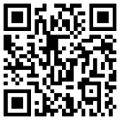E-Learning Application as a Islamic Mentoring on Learning System of Informatics Engineering Students
Abstract
Full Text:
PDFReferences
J. E. Rhodes, R. Spencer, R. N. Saito, and C. L. Sipe, “Online mentoring: The promise and challenges of an emerging approach to youth development,” J. Prim. Prev., vol. 27, no. 5, pp. 497–513, 2006.
H. Stoeger, X. Duan, S. Schirner, T. Greindl, and A. Ziegler, “The effectiveness of a one-year online mentoring program for girls in STEM,” Comput. Educ., vol. 69, pp. 408–418, 2013.
P. Redmond, “Discipline specific online mentoring for secondary pre-service teachers,” Comput. Educ., vol. 90, pp. 95–104, 2015.
M. Ali, “E-learning in the Indonesian education system,” Asia-Pacific Collab. Educ. J., vol. 1, no. 2, pp. 15–24, 2005.
N. O. Ndubisi, “Factors influencing e-learning adoption intention: Examining the determinant structure of the decomposed theory of planned behaviour constructs,” in Proceedings of the 27th Annual Conference of HERDSA, 2004, pp. 252–262.
C. Greener, “The Top 3 Trends In e-Learning For Generation Z,” 2013. .
S. Hrastinski, C. Keller, and S. A. Carlsson, “Design exemplars for synchronous e-learning: A design theory approach,” Comput. Educ., vol. 55, no. 2, pp. 652–662, 2010.
M. J. Rosenberg, E-learning: Strategies for delivering knowledge in the digital age, Vol. 9. New York: McGraw-Hill, 2001.
K. Shrain, “Moving towards e-learning paradigm: Readiness of higher education instructors in Palestine,” Int. J. E-Learning, vol. 11, 2012.
F. N. Al-Fahad, “The learners’ satisfaction toward online e-learning implemented in the college of applied studies and community service, King Saud University, Saudi Arabia: can e-learning replace the conventional system of education?,” Turkish Online J. Distance Educ., vol. 11, no. 2, pp. 61–72, 2010.
DOI: http://dx.doi.org/10.17977/um010v2i22019p032
Refbacks
- There are currently no refbacks.
 | Letters in Information Technology Education (LITE) |

1.png)
1.png)
4.png)
1.png)
.png)
.png)

3.png)
1.png)
1.png)

3.jpg)